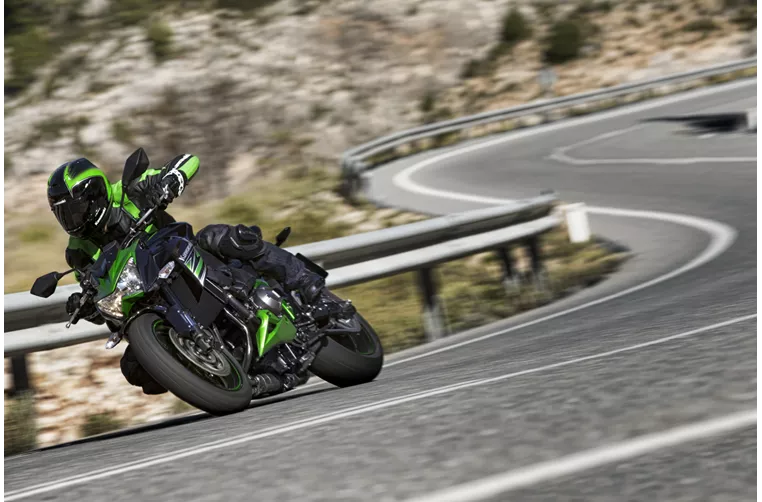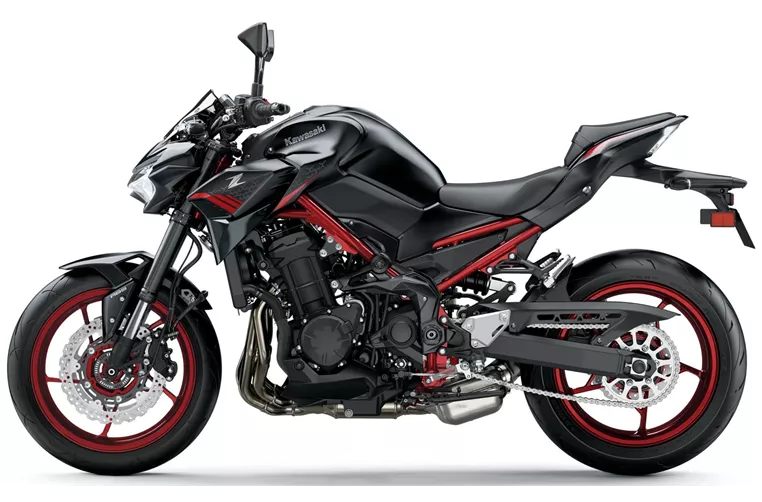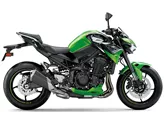Kawasaki Z 800 2013 vs. Kawasaki Z900 2021

Kawasaki Z 800 2013

Kawasaki Z900 2021
Overview - Kawasaki Z 800 2013 vs Kawasaki Z900 2021
The Kawasaki Z 800 model year 2013 and the Kawasaki Z900 model year 2021 are both naked bikes with similar technical specifications. They both have an in-line engine with four cylinders and liquid cooling. However, there are some notable differences between the two models.
In terms of engine power, the Kawasaki Z 800 2013 has 113 HP, while the Kawasaki Z900 2021 has a higher power output of 125.4 HP. This increase in power can result in improved acceleration and overall performance on the Z900.
Similarly, the torque on the Z900 is also higher at 98.6 Nm compared to the Z 800's 83 Nm. This increased torque can provide better low-end power and responsiveness, making the Z900 more enjoyable to ride in various conditions.

Kawasaki Z 800 2013
Both models feature a double cradle steel frame, which provides stability and durability. The front suspension on both bikes is an upside-down telescopic fork, offering a smooth and controlled ride. However, the Z900 has the advantage of adjustable preload and rebound on both the front and rear suspension, allowing for more personalized and precise tuning.
In terms of braking, both bikes have double disk brakes with four pistons at the front. The braking technology used is the same, with petal discs providing efficient and reliable stopping power. This ensures confident and controlled braking performance on both models.
In terms of dimensions and weights, there are minimal differences between the two bikes. Both have the same front and rear tire widths and diameters. The wheelbase on the Z900 is slightly longer at 1450 mm compared to the Z 800's 1445 mm. Additionally, the seat height on the Z900 is lower at 795 mm, making it more accessible for riders of varying heights.
Moving on to the strengths of each model, the Kawasaki Z 800 2013 has an eye-catching and chunky look that appeals to many riders. It also offers confident acceleration and relaxed geometry, making it comfortable for long rides. The powerful brakes on the Z800 provide excellent stopping power, ensuring safety on the road.

Kawasaki Z900 2021
On the other hand, the Kawasaki Z900 2021 boasts a powerful four-cylinder engine that delivers impressive performance. Its intuitive handling makes it easy to maneuver in various riding conditions. The Z900 also comes with good equipment and has an aggressive look, making it visually appealing. Additionally, it offers excellent value for money compared to its competitors.
However, both models have their weaknesses. The Kawasaki Z 800 2013 has limited freedom of movement for the legs, which can be uncomfortable for some riders. On the other hand, the Z900 lacks a quickshifter option, which can be a disadvantage for riders who prefer seamless gear changes. Additionally, some of its competitors have electronic features like a 6-axis IMU, giving them an edge in terms of advanced technology.
In conclusion, while both the Kawasaki Z 800 2013 and the Kawasaki Z900 2021 are high-performing naked bikes, the Z900 offers several improvements over its predecessor. With increased power, improved handling, and better equipment, the Z900 provides a more exhilarating riding experience. However, it is important to consider individual preferences and priorities when choosing between the two models.
Technical Specifications Kawasaki Z 800 2013 compared to Kawasaki Z900 2021
Pros and Cons in comparison
Pros and Cons in comparison
Kawasaki Z 800 2013

Na splošno je bil Z800 odličen. Glede na to, da na vozilu ni bilo nič spremenjenega ali optimiziranega, razen zadnjega dušilca zvoka Remus, je bil končni rezultat odličen.
Kawasaki Z900 2021

In terms of price-performance, the Kawasaki Z900 is hard to beat at the moment. With the perfectly tuned engine, the high-quality chassis components and the electronics added for 2020, this naked bike offers everything that sporty riders will be looking for. There is really nothing to complain about, except for the lack of a quickshifter option.
Price Comparison Avarage Market Price Kawasaki Z 800 vs Kawasaki Z900
There are a few key differences between a Kawasaki Z 800 2013 and a Kawasaki Z900 2021. In terms of price, the actual average price of a Kawasaki Z900 2021 is about 33% higher. Compared to Kawasaki Z900 2021 there are less Kawasaki Z 800 2013 bikes available on the 1000PS.de Marketplace, specifically 7 compared to 33. It takes less time to sell a Kawasaki Z 800 with 56 days compared to 107 days for a Kawasaki Z900. Since model year 2013 1000PS.de editors have written 11 reviews for the Kawasaki Z 800 and 46 reviews for the Kawasaki Z900 since model year 2017. The first review for the Kawasaki Z 800 was published on 9/6/2012 and now has more than 8,100 views. This compares to more than 93,200 views for the first review on Kawasaki Z900 published on 11/11/2016.















